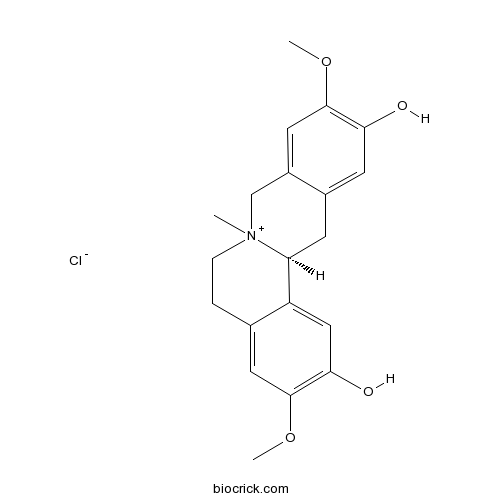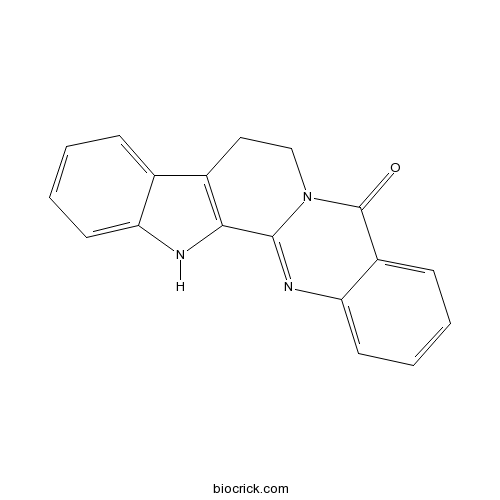Phellodendron amurense
Phellodendron amurense
1. The products in our compound library are selected from thousands of unique natural products; 2. It has the characteristics of diverse structure, diverse sources and wide coverage of activities; 3. Provide information on the activity of products from major journals, patents and research reports around the world, providing theoretical direction and research basis for further research and screening; 4. Free combination according to the type, source, target and disease of natural product; 5. The compound powder is placed in a covered tube and then discharged into a 10 x 10 cryostat; 6. Transport in ice pack or dry ice pack. Please store it at -20 °C as soon as possible after receiving the product, and use it as soon as possible after opening.
Natural products/compounds from Phellodendron amurense
- Cat.No. Product Name CAS Number COA
-
BCN5934
Phellodendrine chloride104112-82-5
Instructions

-
BCN4385
Rutaecarpine84-26-4
Instructions

-
BCN4479
Skimmin93-39-0
Instructions

Transcriptome analysis provides insights into the immune responsive pathways and genes in the head kidney of tiger grouper (Epinephelus fuscoguttatus) fed with Spatholobus suberectus, Phellodendron amurense, or Eclipta prostrata.[Pubmed: 29222026]
The tiger grouper, Epinephelus fuscoguttatus, is an economically important fish in Southeast Asia but has been plagued by several diseases. Spatholobus suberectus (S), Phellodendron amurense (P), and Eclipta prostrate (E) are three commonly used Chinese medicinal herbs. Although previous pharmacological and clinical studies indicated that S, P, and E possess a variety of beneficial functions in mammals, little is known about their functions in farmed fish and the underlying molecular mechanism of their actions. Challenge tests in this study showed that after 14 days of diet supplement, all these herbs could effectively enhance the disease resistance of E. fuscoguttatus against Vibrio harveyi. However, the non-specific immune parameters of the herb-supplemented groups were not significantly different from the control group. To further explore the molecular mechanism of herbal immune-regulating effects on E. fuscoguttatus, transcriptome sequencing and RNA-Seq technique were applied on E. fuscoguttatus kidney. De novo transcriptome assembly of E. fuscoguttatus kidney yield 80,014 unigenes, among which, 44,901 (56.12%) were annotated with at least one of the public databases (Nr, Nt, Swiss-Prot, KEGG, COG, GO). Among these, 22,738, 11,700 and 27,457 unigenes were assigned to 57, 25 and 258 categories of GO, COG and KEGG databases, respectively. Using Solexa/Illumina's DGE platform, a total of 231, 186 and 144 putative differentially expressed genes (DEGs) were detected in P, E and S group compared with the control group. GO analysis indicated that in P and E, down-regulated DEGs were dominant in almost every GO term; whereas in S, up-regulated DEGs were more dominant. KEGG pathway analysis revealed that putative DEGs in all three herb groups were obviously enriched in the pathways related to infective diseases and immune system. We also identified a number of immune relative genes and pathways (TLR5, IL8 and MAPK pathway, for instance) associated with P, E and S's regulatory effects on E. fuscoguttatus. This study will enrich the E. fuscoguttatus transcriptome database, contribute to a better understanding of the molecular mechanisms associated with the immunoregulatory activities of Chinese medicinal herbs on teleost and provide valuable information on the prevention of grouper Vibrio diseases using Chinese medicinal herbs.
Antiinflammatory and Hepatoprotective Medicinal Herbs as Potential Substitutes for Bear Bile.[Pubmed: 28807157]
Practitioners of traditional Chinese medicine (TCM) commonly prescribe medicinal formulations relying on the purported synergism of a combination of plant species, sometimes incorporating animal parts and minerals. Bear bile, obtained from either wild or farmed bears, is a commonly used constituent of traditional medicine formulations. With several bear species now listed under Convention on International Trade in Endangered Species of Wild Fauna and Flora as threatened with extinction and with bear farming being actively campaigned against on ethical grounds, it is important to seek and promote alternatives to the use of bear bile as medicine. This chapter describes and evaluates the scientific data relating to the efficacy of bear bile and potential alternatives to its use, including the use of bile from other animal species, the use of synthetic chemical alternatives, and the use of herbal substitutes. Scientific studies have confirmed the efficacy of bear bile as an antiinflammatory and a hepatoprotective agent. Ursodeoxycholic acid (UDCA), the active component of bear bile is used in a synthetic form in Western medicine and can serve as an alternative to bear bile in the treatment and management of certain cholestatic liver conditions. In TCM practice, bile from domesticated animal species (such as cattle, chicken, and pig) has been used as a substitute for bear bile. Following evaluation of TCM literature and pharmacological/clinical data, the authors propose six plant species, either as single herbs or in combination, Gardenia jasminoides (zhī zi; ), Scutellaria baicalensis (huáng qín; ), Coptis chinensis (huáng lián, ), Phellodendron amurense (huáng băi; ), Andrographis paniculata (chuan xin lian; ), and Rheum palmatum (dà huang; ), two medicinal Kampo formulations, Orengedokuto, Dia-Orengedokuto (which originated from traditional Chinese herbal formula Huanglian Jiedu Tang, ), and two individual phytochemicals (berberine and andrographolide) as alternatives to bear bile. The proposed herbal alternatives are frequently found listed in traditional formulations also containing bear bile, usually with different therapeutic roles ascribed to them. The existing evidence base for the effectiveness of herbal alternatives is sufficiently strong for TCM practitioners and consumers to consider using these without the addition of bear bile. This consideration is driven by the imperative to protect populations of bears from overexploitation in the wild and when farmed. However, for the identified alternatives to be accepted by users, it is essential that researchers and TCM practitioners collaborate effectively to initiate consumer behavior change.
Melanogenesis-Inhibitory and Cytotoxic Activities of Limonoids, Alkaloids, and Phenolic Compounds from Phellodendron amurense Bark.[Pubmed: 28425165]
None


